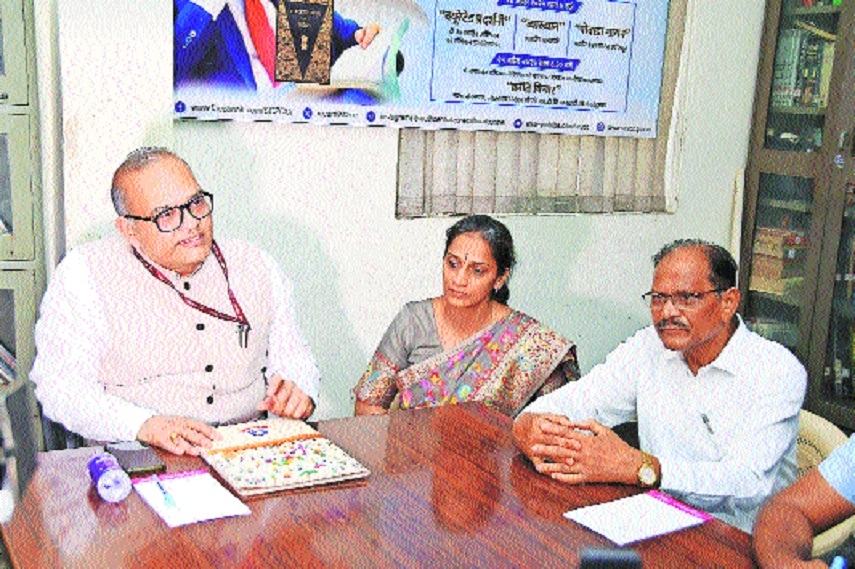Constituent Assembly Debates to be available in Indian regional languages soon: Nanda
| Date :15-Apr-2025 |

Samar Nanda, Joint Secretary of Ministry of Culture, Government of India, interacting with media during his visit to the city on Monday Astha Godbole-Karlekar, Director of SCZCC; and Dr Pradeep Aglave also were present.
Staff Reporter :
The Constitution has played a pivotal role in shaping Indian democracy, said Samar Nanda, Joint Secy of Ministry of Culture
“The extensive debates that took place before the drafting of the Indian Constitution will soon be accessible in various Indian regional languages. This translation project has been initiated by the Sahitya Akademi, with the goal of completing it by Constitution Day, observed on November 26,” informed Samar Nanda, Joint Secretary of Ministry of Culture, Government of India.
Nanda shared this information during a press interaction held at the South Central Zone Cultural Centre (SCZCC), on Monday. Astha Godbole-Karlekar, Director of SCZCC; Dr Pradeep Aglave and others also
were present.
The Constitution has played a pivotal role in shaping Indian democracy. Its creation involved many eminent personalities and intellectuals from across the country.
“Every aspect included in the Constitution was thoroughly discussed. While there were disagreements among members on various issues, these discussions ultimately helped strengthen the Indian democracy. To ensure that more people can access and understand these discussions, they are now being translated into regional languages,” explained Nanda.
Nanda added that all these discussions are already available in English, but they remain accessible to only a limited audience. To help more people understand what the Constitution contains and the context behind its provisions, it is important to offer these materials in regional languages. The translated editions will be made available at affordable prices.
Nanda informed committees are formed for each regional langauge to review to ensure the texts are error-free, and are not misinterpreted.
Reflecting on the significance of Dr Ambedkar’s role, Nanda emphasised on the ongoing commemorations of 75 years of the Indian Constitution.
“The intention is to engage public, to raise awareness about his life and work,” he stated and added that one can connect with the society only when one is able to connect it with history, culture, and heritage. “Dr Ambedkar was not merely proposing abstract ideals. There was an intellectual depth and integrity with which he approached the constitutional debates. He has tremendously captured the entire nuances of the debates into the body of the Constitution,” Nanda noted.
Nanda suggested that dramatising these debates, through skits and performances, would breathe life into historical processes. He furthur reminded of the physical beauty of the original document. “People often think the Indian Constitution is only a book, no, it is an artwork too. It was not printed, but handwritten. The paintings on each page were done by Nandalal Bose.
There are depictions of Mohenjodaro, Sanchi Stupa, Varanasi, Ganga river. It hooks one with the culture,” he expressed.
India’s Constitution, he asserted, is a marvel of foresight and inclusivity. “When the Indian Constitution came, women had the right to vote from the first election. This is the longest constitution of the youngest democracy. It was made long to bring in all best practices, while accounting for the country’s vast diversity,” he stated with pride.
On the occasion of Dr Babasaheb Ambedkar’s birth anniversary, an exhibition based on the Indian Constitution was organised at the SCZCC premises.
